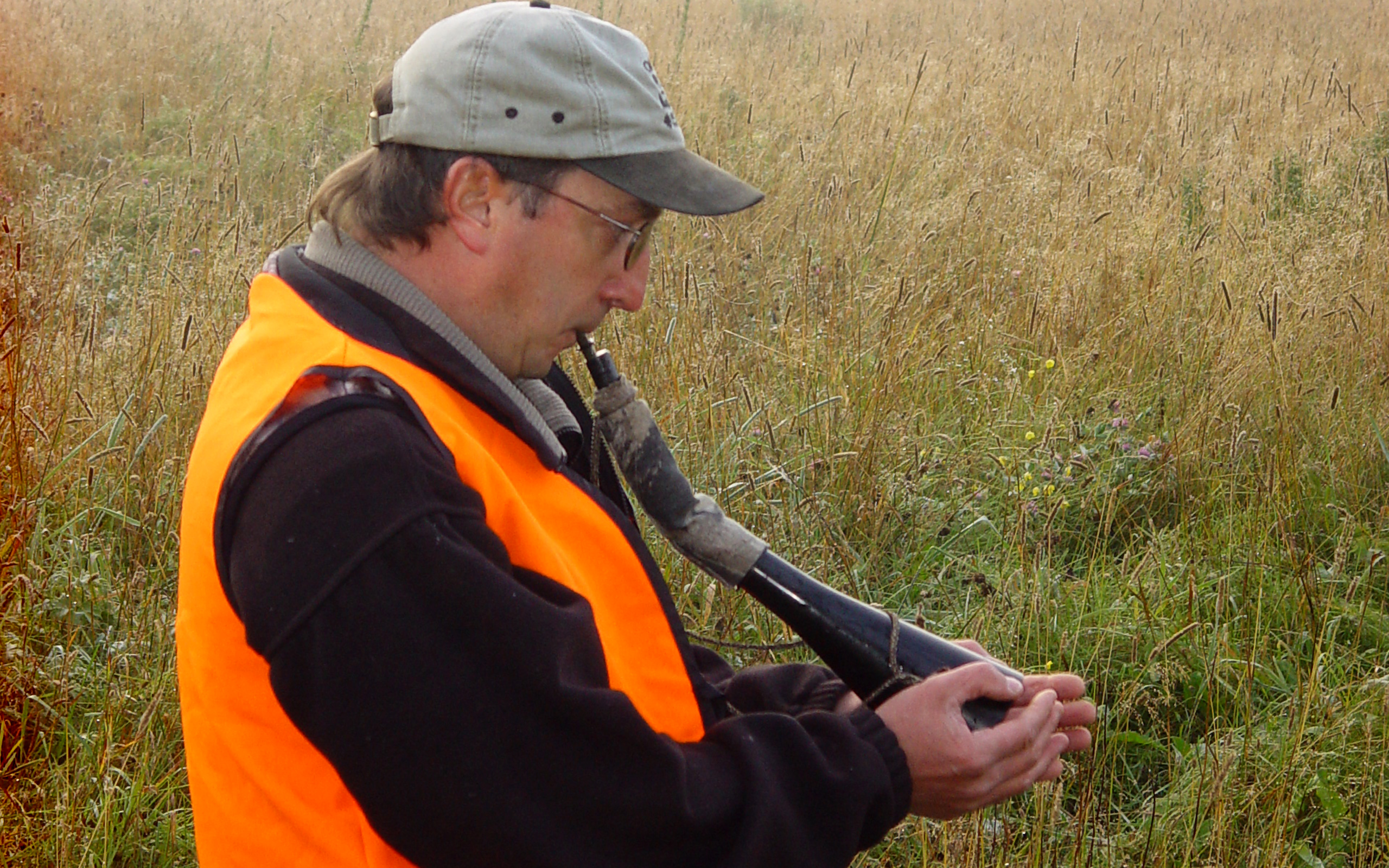
The last week of September begins the first of three six-day moose hunts in various zones, and depending on the lottery draw, each of the lucky winners is assigned a specific hunt period, zone and bull or cow permit. For many sportsmen it may well be a once-in-a-lifetime opportunity. The memories will last a lifetime, especially if it’s a family event, and the delicious meat is a wonderful reward.
There are three specific styles of hunting for Maine’s largest big game animal. The particular zone being hunted and the choice of weapon (rifle, shotgun, bow or crossbow) enter into the choice.
Drive and spot is the most common approach, and very effective in the open urban edge and rural farm fields of Aroostook. Spotting can be a bit tougher on woods roads and logging two-tracks, but often moose are right in the road or sparse tree line edges. It’s usually much simpler to locate, clean, drag and load the downed animal in open fields than thick forest.
Another option is to do a bit of pre-season scouting and pinpoint a couple of areas with good food sources, multiple trails, frequent tree rubs and even a bull wallow or two. A hunter can then make a choice to set up a tree stand or ground blind overlooking a likely travel route. It is also possible to still-hunt such a region, using the old sneak-and-peek method when the conditions are right at dawn or dusk.
The third method is often the most exciting, and certainly the most challenging. Using a cow call to entice a bull moose in heat to approach within rock-throwing distance can be a hair-raising accomplishment. For hunters attempting to down a moose with a bow or handgun, calling is the best option, and even when it works the odds are 50/50 if the amorous but cautious old bull will approach out of cover and within range.

This fine bull moose is covered with burdocks after plowing through the woods and brush to investigate cow calls. During hunts, using a moose call is very productive. (Courtesy of Bill Graves)
It’s also feasible to imitate a bull moose calling while thrashing and scraping the nearby tree limbs and bushes with a fake moose antler paddle to simulate a rutting male ready to fight and defend his territory and his harem of cow moose. Other bulls within hearing range will often hurry to investigate, ready to fight for dominance and a claim to the cows. This is always an interesting scenario. Some hunters and guides have nearly been run over by infuriated, aroused bull moose tearing through the woods to do battle.
Many experienced guides and some hunters practice regularly and can realistically mimic several different male and female moose calls with only their mouth and vocal cords. Some amplify the sound and distance with a homemade birchbark megaphone while others use a more sturdy, synthetic commercially manufactured device.
There are several commercially made moose calls often referred to as horns; they each have a tuned reed like a duck or goose call, but adjusted to produce a specific bull or cow sound when blown. These moose horns are fairly simple to use, realistic sounding and quite loud, excellent options for novice hunters who to do their own calling.
For rookie hunters with no guide but wanting a great call with lifelike sounds and several different call features, there are dozens of electronic calls for sale. Some units are as inexpensive as $40 and higher end models with high-tech features can go for a hundred or two. Go online to read reviews, see testing and evaluation comparisons and compare value, then visit a local sporting goods store to see what’s available and actually hold, hear and consider a few options.
As with any big game hunting venture, pre-season scouting is crucial, and while it’s possible to stop at random locations and cold call for moose, it’s far more productive to have several areas with lots of trails, scrapes and previous sightings. While the couple of hours around dawn and dusk are prime, during the rut bulls are active most of the day. Visit a likely location, set up and call and rake and rattle the brush for at least three minutes, listen for an immediate response and call back if you hear one. Wait about 10 minutes, then call again. Wait, listen well, and hope. Three sets of calling and brush banging is my usual trail period, seldom over 45 minutes when there’s no interest, then pack up, move to the next site and repeat.
Calling is an exciting, interactive way to hunt moose and many sportsmen would rather be active than sit in a vehicle to drive and spot all day. It’s not uncommon for hunters to revisit locations with lots of sign and call two or three times in a day as the moose move about a great deal at this time of year.
Despite being anxious to locate a mate or fight another bull, moose still tend to be cautious, so if they get wary and refuse to approach closer, take the shot they present if you and the gun can handle it. On the other hand you don’t want to be trampled by an amorous, fast-approaching, wide-antlered, furry freight train. The “call of the wild” is nothing if not exciting when the action heats up.




